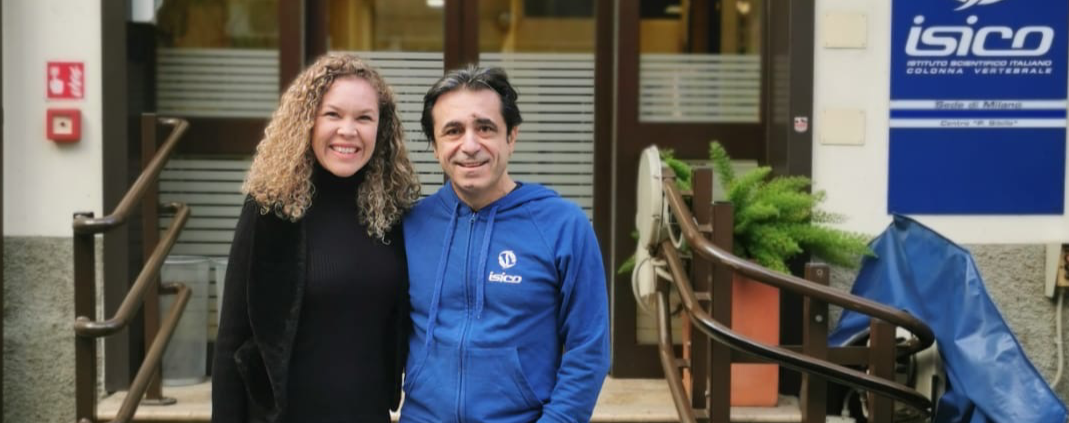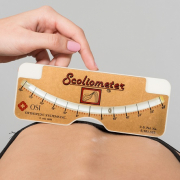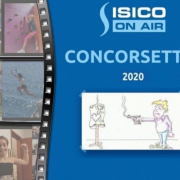Isis Navarro at Isico headquarter
Could you tell us about your studies?
I am a PhD Student at Universidade Federal do Rio Grande do Sul. Since 2017, after I completed the SEAS course, I started to have only patients with scoliosis and work just with these patients. In my master’s degree I studied the surface topography as a possibility of easy and three-dimensional tool to evaluate scoliotic patients. I had some publications based on this primary subject.
https://www.sciencedirect.com/science/article/abs/pii/S0966636218303126
And I have also some articles accepted for publication:
NAVARRO, ISIS J.R.L.; CANDOTTI, CLÁUDIA T. ; FURLANETTO, TÁSSIA S. ; DUTRA, V. H. ; AMARAL, M. A. ; LOSS, JEFFERSON F. . Validation of a mathematical procedure for the cobb angle assessment based on photogrammetry. Journal of Chiropractic Medicine (Print), 2019.
NAVARRO, I. J. R. L.; CANDOTTI, CLÁUDIA T. ; AMARAL, M. A. ; DUTRA, V. H. ; Gelain, G. ; LOSS, JEFFERSON F. . Validation of the measurement of the angle of trunk rotation in photogrammetry. JOURNAL OF MANIPULATIVE AND PHYSIOLOGICAL THERAPEUTICS, 2019.
What is your profession?
I am a physiotherapist.
Why did you register for the SEAS course?
I was looking for the SEAS course, and my plan was to travel to Italy to attend the course, but fortunately Michele and Alessandra came to Brazil to teach for the first group in Brazil. I discovered the SEAS approach doing lots of researches on internet, searching for consistent methods of treatment to scoliotic patients to offer to them the best possibility of treatment and results.
What makes the SEAS learning course different from other educational courses and programs?
The more significant advantage of the SEAS course is the clarity of the reasoning behind the technic and the facility to apply what you learned. The SEAS approach allows doing physiotherapy with all type of scoliotic patients, independent of the type or classification of the curve. The teachers were always ready to answer all the questions and help with difficult cases I asked separately.
Are you satisfied with what you have learned?
Yes. But when you start to practice more and more always news doubts arise.
If you were asked to recommend the course, what would you say?
The SEAS course is an excellent way to understand the world of scoliosis, its characteristics and the reasoning to treat adequately and accurately. After the course, you will be able to evaluate and treat scoliotic patients based on a method easy to understand and to apply with a high level of scientific evidence.










